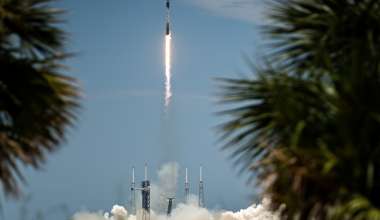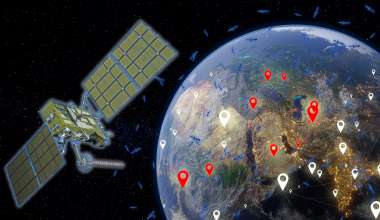The U.S. space economy is as robust as it’s ever been, with a growing number of new participants expanding the scope of game-changing innovations, ambitious missions and exciting possibilities. Yet, across such a vast breadth of stakeholders and activities, mitigating friction points and streamlining end-to-end efficiencies – especially across unaddressed gaps – is vital to meeting the needs for ensuring the nation’s access to space in an increasingly competitive environment.
As a connector and convener across the space enterprise, The Aerospace Corporation plays an essential role fostering the collaboration and integration that accelerates and strengthens this burgeoning ecosystem. Aerospace is uniquely positioned to work across government agencies, mission areas and commercial partners to bring forward cross-cutting solutions for the toughest challenges in space.
“Often, the hard problems in national security involve multiple stakeholders, so it isn’t necessarily in any individual U.S. government agency’s area of responsibility,” said Randy Kendall, vice president of Launch, Missiles, and Mobility at Aerospace. “In these situations, Aerospace is in a unique position to lean forward, bridge the gap and look at that challenge from a bigger-picture perspective. That bigger picture has to include commercial capability—systems and services that the U.S. government can exploit, buy, or leverage without having to build their own.”
Advancing Agility and Speed for Space Access
Historically, delivering capability to space through launch has been expensive, bespoke and siloed and can be challenged with programmatic roadblocks. With so many complexities across the mission lifecycle, any number of issues can create significant delays and cost increases, potentially putting an entire program at risk.
More importantly, the modern space domain is increasingly more congested and contested, and for critical missions, like those the National Security Space Launch (NSSL) Program launches, more agile and rapid approaches are needed to outpace the threat.
“A key focus for Aerospace is enabling faster, easier, but also very reliable access to orbit, and that can also translate to cost and time savings for the government,” said Peter Broussinos, associate principal director of Launch Enterprise Engineering at Aerospace. “If you have any lengthy launch delays, not only is that space-based capability not available to the warfighter, but those can also end up resulting in huge expenses to the government due to satellite storage fees and others costs that can easily reach tens of millions of dollars per month.”
Shaping an Enterprise Approach for Space Launch
Aerospace is advancing new methodologies, concepts and architectures to accelerate rapid acquisition and delivery to support mission needs. Working across the space enterprise, Aerospace partners with national space agencies and the broader U.S. space community to identify end-to-end mission needs and to deliver innovative and integrated solutions at speed.
Examples of the work Aerospace is doing include demonstrating how interoperability can support greater agility for launch capability, shortening payload integration timelines, rapidly moving payloads between rockets with minimal schedule impact and providing greater flexibility for leveraging a wider range of available rockets. Aerospace-developed analytical tools and processes are key enablers of this important initiative and are leveraged so the NSSL program can take maximum advantage of the available commercial capabilities procured through the latest NSSL launch contracts.
Aerospace is also advancing methodologies like Agile Mission Assurance, a framework that factors in risk tolerance, available resources, and schedule constraints to shape and optimize Aerospace’s mission support around these needs.
“These are hard problems,” said Broussinos. “They’re complex because they involve so many players and considerations that contribute to the challenge of building agility. Aerospace's strength is our enterprise-wide engagement – across launch and every national security satellite. That's why we’re able to really drive these enterprise-level solutions.”





